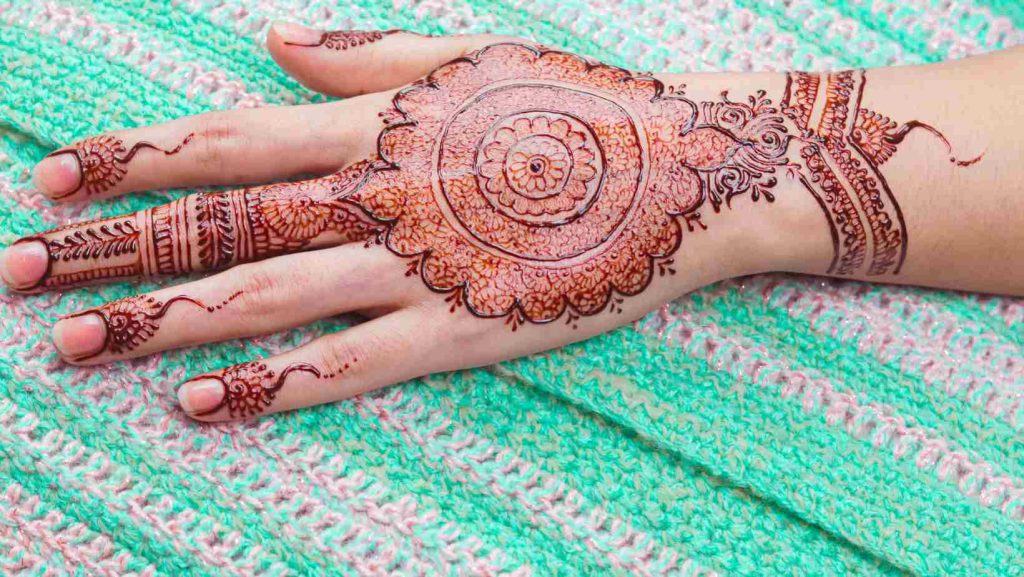henna leaves and dye properties: Henna, derived from the Lawsonia inermis plant, has long been celebrated for its versatile applications in body art and hair care. Its popularity stems from the rich dye properties found in its leaves, which offer a natural and vibrant alternative to synthetic colorants.

Henna Leaves and Dye Properties: Introduction
Henna leaves have been used for centuries across various cultures for their remarkable ability to impart color and adornment. In this article, we explore the fascinating world of henna leaves and delve into the science behind their dye properties.
Overview of Henna Leaves
Henna leaves, obtained from the Lawsonia inermis shrub, contain lawsone, a natural pigment responsible for its dyeing properties. These leaves have been traditionally ground into a fine powder and mixed with other natural ingredients to create a paste for body art and hair dyeing.
Importance of Henna Dye Properties
The dye properties of henna make it a preferred choice for individuals seeking natural alternatives to synthetic hair dyes and chemical-laden body art products. Its ability to create rich, long-lasting color while nourishing the skin and hair sets it apart as a versatile beauty solution. Henna Leaves and Dye Properties
The Chemistry Behind Henna
Understanding the chemistry behind henna’s dye properties sheds light on its efficacy and versatility in cosmetic applications.
Understanding Lawsone
Lawsone, the primary dye molecule in henna leaves, binds with proteins in the skin and hair, resulting in a semi-permanent coloration. This interaction, coupled with oxidation, produces a range of hues from orange to deep burgundy, depending on factors such as concentration and application method.

pH Sensitivity in Henna Dyeing
The pH level of the medium influences the intensity and shade of henna dye. Acidic conditions enhance color development, while alkaline environments produce softer tones. This sensitivity underscores the importance of proper preparation and pH balancing for optimal results.
Applications of Henna
Henna finds diverse applications in beauty rituals and cultural traditions worldwide, owing to its versatility and natural properties.
Henna in Body Art
The art of mehndi, or henna body art, holds cultural significance in many traditions, symbolizing joy, celebration, and blessings. Intricate designs crafted with henna paste adorn the skin temporarily, offering a canvas for self-expression and creativity. Henna Leaves and Dye Properties

Henna for Hair Care
In addition to body art, henna serves as a natural hair dye and conditioner, offering an alternative to harsh chemical treatments. Its dyeing properties impart vibrant color to the hair while nourishing the scalp and strands, promoting shine and vitality. Henna Leaves and Dye Properties
Benefits of Using Henna
Beyond its aesthetic appeal, henna offers numerous benefits for both skin and hair health, making it a preferred choice for beauty enthusiasts worldwide.
Nourishing Properties
Henna possesses natural conditioning properties that strengthen the hair and enhance its texture. Regular use of henna-based hair treatments can help alleviate dryness, frizz, and breakage, resulting in healthier-looking locks.
Cultural Significance
Henna holds deep cultural significance in many societies, serving as a symbol of beauty, auspiciousness, and tradition. From bridal ceremonies to festive occasions, the application of henna signifies joy, prosperity, and blessings.
FAQs about Henna
How long does henna last on the skin?
Henna body art typically lasts between one to three weeks, depending on factors such as skin type, application technique, and aftercare practices.
Is henna safe for sensitive skin?
While henna is generally well-tolerated, individuals with sensitive skin should perform a patch test prior to extensive application to mitigate the risk of adverse reactions.
Does henna have any medicinal properties?
Beyond its cosmetic uses, henna possesses antimicrobial and anti-inflammatory properties, making it a popular remedy for treating minor skin ailments and promoting wound healing. Henna Leaves and Dye Properties
Can henna be mixed with other natural ingredients?
Yes, henna can be combined with various additives such as indigo, amla, or cassia to customize the color and nourishing properties according to individual preferences.
Are there any risks associated with black henna?
Black henna, often containing harmful additives such as para-phenylenediamine (PPD), can cause severe allergic reactions and skin damage. It is advisable to steer clear of black henna products and opt for natural, pure formulations instead.
Conclusion
In conclusion, henna leaves and their dye properties epitomize the beauty of nature’s bounty. From intricate body art designs to vibrant hair coloring, henna offers a myriad of possibilities for self-expression and adornment. Embrace the magic of henna and unlock a world of color and creativity.
Buy Henna powder in bulk : Click here
Buy Henna powder: Click here
Read more : What is BAQ Henna Powder?

